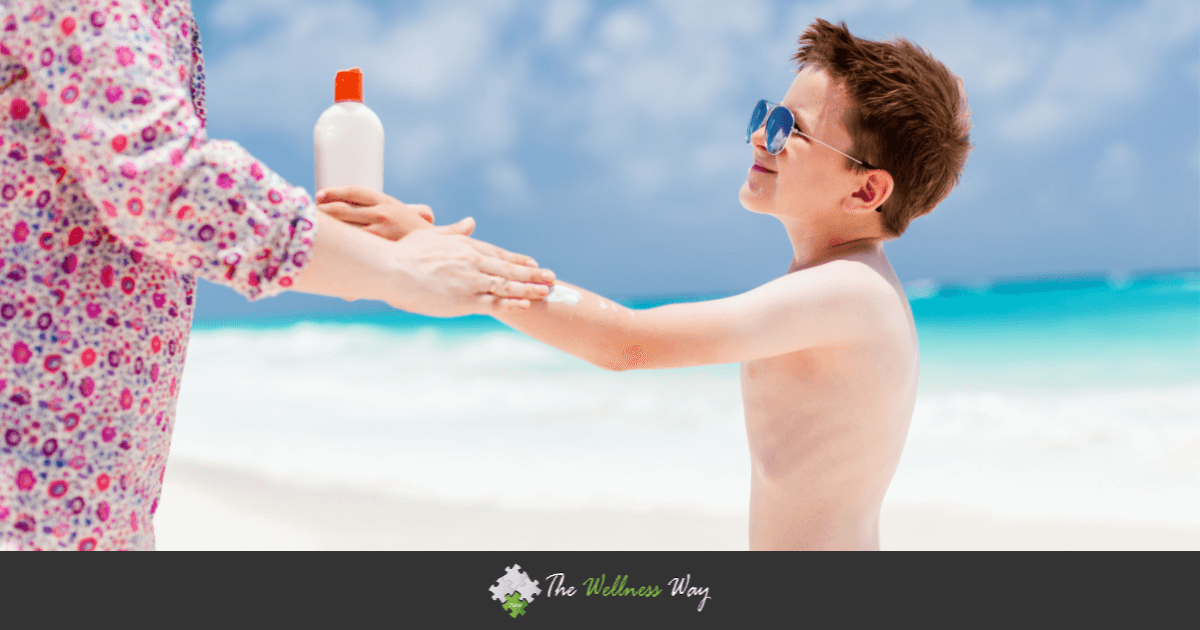We Disagree: CNN Reports You Should Still Use Sunscreen Even Though Toxic Chemicals Enter Bloodstream

The sun is not the enemy here. Toxic sunscreen is! We have seen in recent news stories, like this one from CNN, that it’s being reported that toxic chemicals are detected in the bloodstream at concerning levels. Those chemicals remain in the body 24 hours after application. (1) These reports confirm what we have been saying, people should stop using toxic sunscreen. Sadly, it’s not changing the recommendations of the “experts” who still recommend using sunscreen despite results of studies.
As reported by CNN:
(CNN)It took just one day of use for several common sunscreen ingredients to enter the bloodstream at levels high enough to trigger a government safety investigation, according to a pilot study conducted by the Center for Drug Evaluation and Research, an arm of the US Food and Drug Administration.
The study, published Monday in the medical journal JAMA, also found that the blood concentration of three of the ingredients continued to rise as daily use continued and then remained in the body for at least 24 hours after sunscreen use ended.
The four chemicals studied — avobenzone, oxybenzone, ecamsule and octocrylene — are part of a dozen that the FDA recently said needed to be researched by manufacturers before they could be considered “generally regarded as safe and effective.”
So, should you stop using sunscreen? Absolutely not, experts say.
“Experts” Say We Should Not Stop Using Sunscreen
Wait…why not? We strongly disagree with these “experts.” As we have noted in our past article on sunscreen, some of these chemicals have been linked to health conditions including cancer and they are harmful to reefs. Many of the sunscreens we use here in the U.S. have chemicals that are banned in Europe because of the potential for harm to humans. Hawaii is banning many of these because of the harm it does by bleaching reefs and causing DNA damage at a cellular level killing the reef. (2) But we should still use them?
The CNN Article also says:
A Swiss study found oxybenzone or one of four other sunscreen chemicals in 85% of breast milk samples, sparking concern that newborns could be exposed.
Oxybenzone is an endocrine disruptor that has been linked to endometriosis in women and low testosterone in men. The estrogenic properties has led to male fish developing female traits. But let’s consider it safe for regular use until there has been more research?
People are told to apply sunscreen daily to avoid cancer even though cancer rates are going up! The CNN article notes that even though Americans are using more sunscreen than ever before that melanoma diagnosis in the U.S. is more common than all other cancers combined. Does that make sense to you?
The article later says:
“The sun is the real enemy here,” said Scott Faber, senior vice president for government affairs at the Environmental Working Group, or EWG, an advocacy group that publishes a yearly guide on sunscreens.
“It’s not news that things that you put on your skin are absorbed into the body,” Faber said. “This study is the FDA’s way of showing sunscreen manufacturers they need to do the studies to see if chemical absorption poses health risks.”
The Sun Isn’t the Enemy, Toxic Sunscreen Is
We disagree with this too! Like we stated earlier, the sun is not the enemy! Vitamin D is a critical hormone that helps the body regulate over 1,000 genes and has many benefits which we have listed in our article on Vitamin D. (3) What is the best way to get this vitamin? From the sun.
This is the only vitamin your body can make on its own and using sunscreen prevents that from happening. Vitamin D actually kills cancer, and supplements have been shown to lower your risk of cancer. (4) Your body can make all of the Vitamin D it needs with just 20 minutes of daily exposure to the sun. So, don’t block those rays with toxic sunscreens that contain chemicals that are linked to cancer.
Sufficient Vitamin D levels and working outside have been linked to lower incidence of cancer and melanoma while being Vitamin D deficient has been linked to a higher risk. (5) (6) Blocking the sun’s beneficial rays can be harmful and, when you do need extra protection, there are safer sunscreen options like the ones we mentioned in our sunscreen article.
The reports say that toxic chemicals are found in your bloodstream for at least 24 hours after application and we don’t even fully know the extent of the damage that they can cause. From what we know about the benefits of Vitamin D and the chemicals in conventional sunscreens, it’s not worth the risks. The sun isn’t your enemy – toxic sunscreens are!
Resources:
- https://www.cnn.com/2019/05/06/health/sunscreen-bloodstream-fda-study/index.html
- https://www.ncbi.nlm.nih.gov/pmc/articles/PMC1470481/
- https://www.ncbi.nlm.nih.gov/pmc/articles/PMC5685053/
- https://www.ncbi.nlm.nih.gov/pmc/articles/PMC5129901/
- https://ptwcare.com/sunscreen-can-be-bad-for-people-and-reefs-what-we-use-instead/
